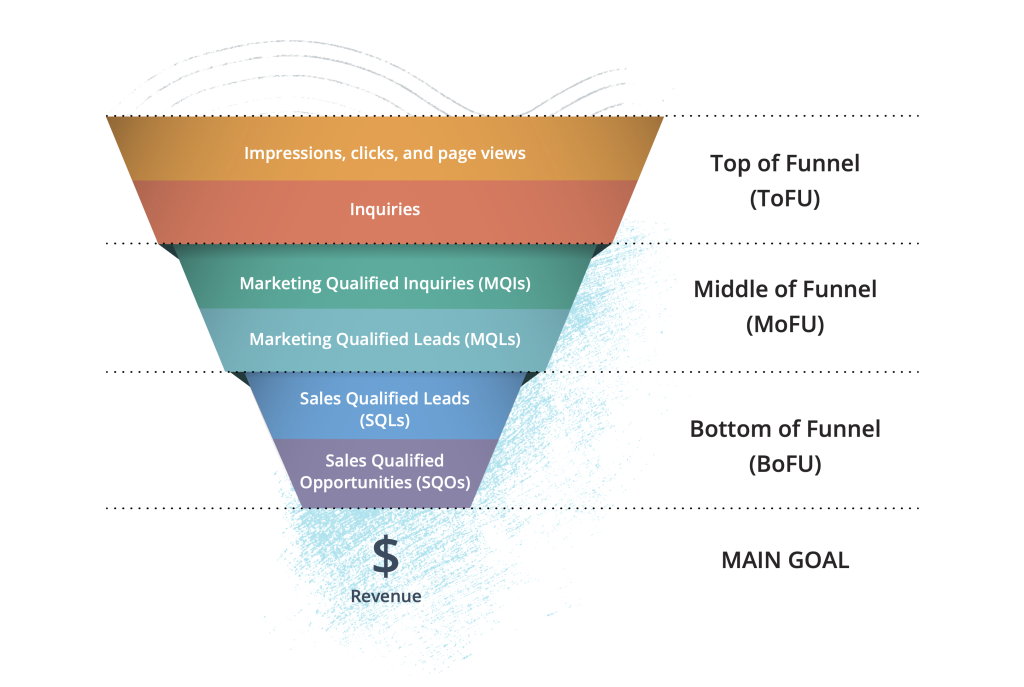Enterprise Software Marketing, Part 4: Understanding Ad Spend Optimization
This is part 4 of a 5-part serious all about enterprise software marketing. Part 1 is about defining your message and audience. Part 2 covers content creation, and then part 3 explains how to promote that content. Lastly, this part reviews how to track, measure, and optimize, which is rounded out by part 5, which covers ongoing lead nurture.
Every step on this list requires a lot of investment, whether work and time or actual monetary investment. You need the right tools to do the job effectively, a budget for ads to promote your content, and then there’s the cost of hiring a skilled team capable of doing all the work, whether that’s internal hires or an outside agency. All of that adds up.
That’s why it is essential that you track, measure, and optimize campaigns based on revenue.
To reiterate, that’s revenue, not leads. Leads are nice, but you can’t pay your staff or investors with them. People expect to be paid with money, so you need to optimize your marketing spend based on revenue generation…not clicks, page views, or inbound inquiries.
Want all the details on how to build out a robust enterprise software marketing strategy?
Download the eBook: Marketing Software to the Enterprise
Ad Spend Optimization Based on Metrics
Tracking this way is not easy. Most companies still don’t have the ability to track inbound inquiries all the way to final sale. If you can’t do it now, make sure to make it a long-term goal. In the meantime, track based on the best metric you have and then take steps to go one deeper.
How to Slice and Dice Metric Information for Ongoing Ad Spend Optimization
Okay, you’ve figured out how far in the funnel you can track. Hopefully, you can get down to at least marketing qualified inquiries. That way, you know that you’re reaching an audience who could buy your product or service if they want to.
The next step is organizing your marketing spend (in dollars, time, and other resources) in a way that you can make sense of. We recommend thinking about it in terms of campaigns and platforms.
| Campaigns |
| A campaign is an idea, an asset, or a call to action. |
|
| Platforms |
| A platform is the method you use to reach your audience. |
|
The Matrix: Putting Ad Spend Optimization All Together
Then use the metrics you have, the marketing budget spent, and the campaign/platform breakdown to create a matrix to understand what campaigns and platforms work best. Again, we like to think about it in terms of campaigns (asset, CTA, etc.) and platforms (Google AdWords, LinkedIn, etc.).
Organizing your marketing data helps you determine what messages resonate best with your audience and where. Then, you can take this information and advance your marketing campaigns with a more nuanced multi-touch approach or account-based marketing (ABM) strategy.
- “Get a Demo” promoted on AdWords
- Webinar for prospects promoted on LinkedIn
- Solution 101 eBook promoted on CIO.com
Organizing your data this way allows you to easily see what topics each of your audience segments are responding to and the platforms that are working best for your different messages.
It looks something like this:
From here, you can do a more nuanced and multi-touch analysis. For example, a deep dive into understanding which campaigns are most effective at finding net new leads, which are better at pushing prospects through the funnel, and which bring in the “hottest” leads that best match your ideal customer profile.
In our experience, leads that come through AdWords or similar bottom-of-funnel campaigns have the most immediate impact and are the easiest to track. However, they tend to be much more expensive in the long run compared to top-of-funnel leads, especially if you have an effective lead nurture and sales handoff program.






